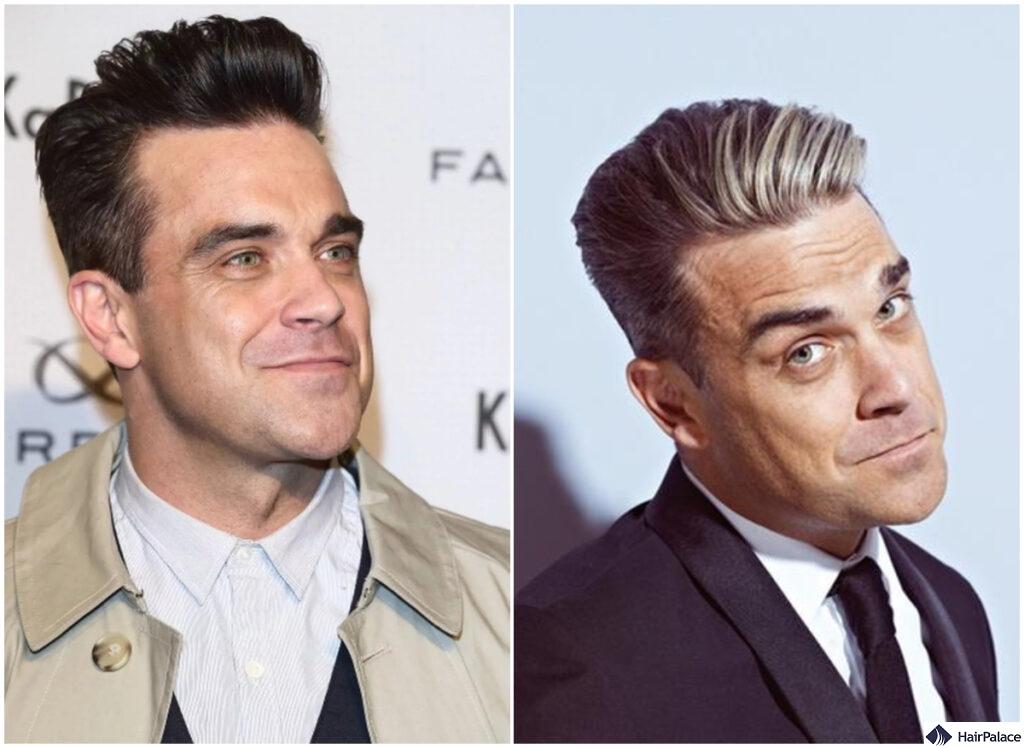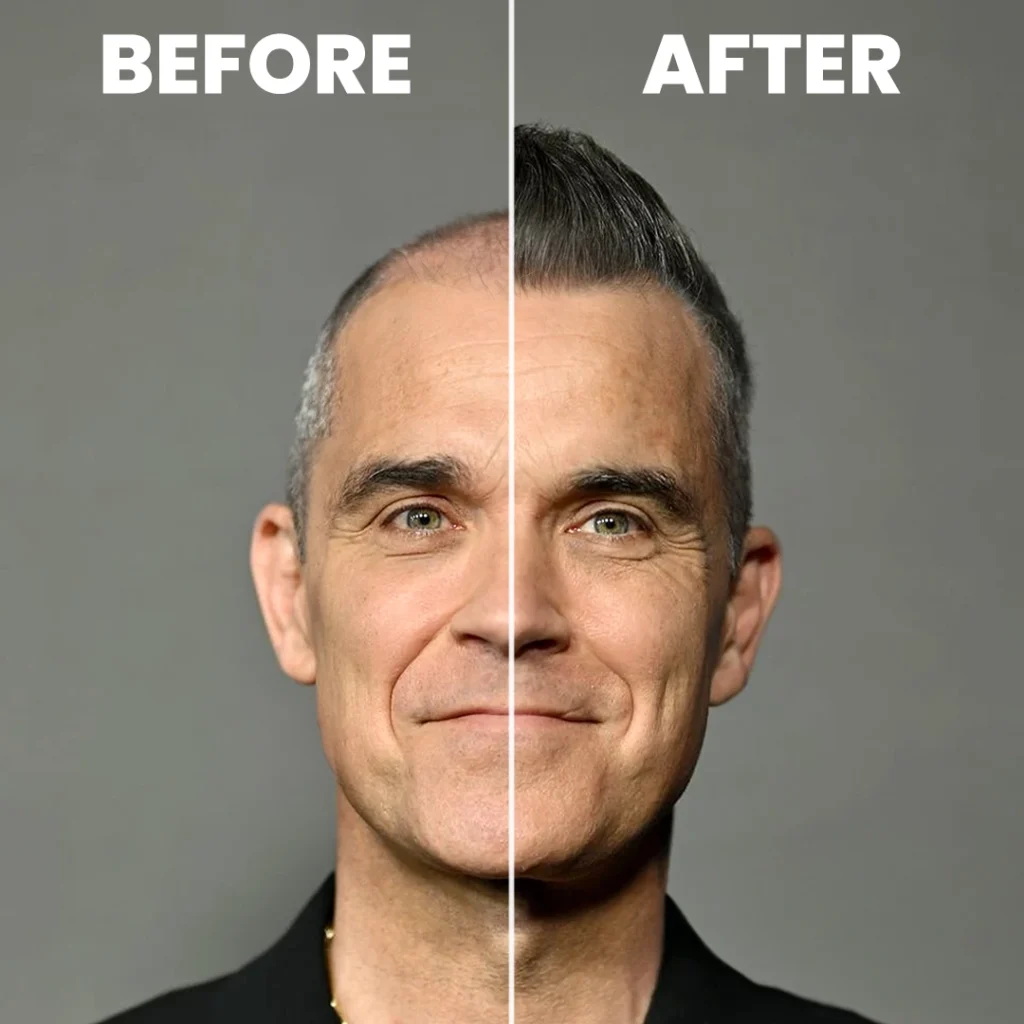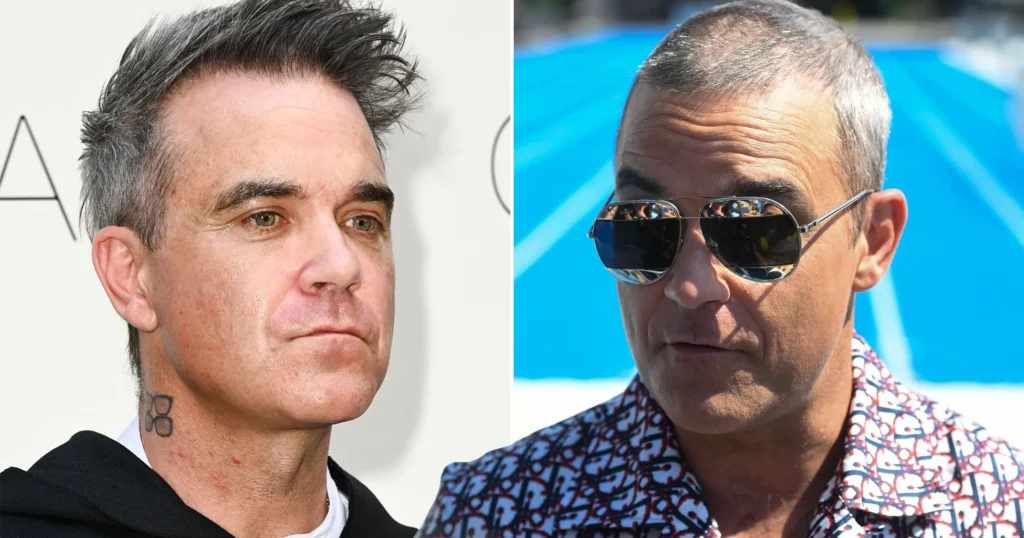
For over three decades, this British music legend has captivated audiences worldwide. His journey from a fresh-faced pop star to a seasoned performer reflects both personal growth and physical changes.
The entertainment industry often magnifies celebrity aging, making every transformation noteworthy. With his 50th birthday marking a milestone, fans have observed subtle yet significant evolutions in his appearance.
From refined dental work to natural-looking hair restoration, his aesthetic updates demonstrate how modern cosmetic procedures can enhance features without drastic alterations. These changes complement his enduring stage presence and vocal talent.
What makes his story compelling isn't just the physical aspect. His candidness about personal struggles and professional reinventions creates an authentic connection with audiences. This openness about self-improvement resonates deeply in today's image-conscious world.
Emerging as a teenage heartthrob in the 90s, this artist redefined British pop music. His journey began at just 16 years old when he joined the boy band Take That, quickly becoming a fan favorite with his charisma and vocal talent.
By the mid-90s, he embarked on a solo career that skyrocketed him to global fame. Hits like "Angels" and "Rock DJ" cemented his status as a star, with over 80 million albums sold worldwide. His music resonated across generations, blending pop, rock, and electronic influences.
Accolades followed, including 18 BRIT Awards and an Ivor Novello for songwriting. Beyond music, he shaped culture through documentaries and memoirs, offering raw insights into his personal and professional life.
His "lad" persona made him tabloid fodder, but beneath the headlines lay a complex artist battling substance abuse. These struggles later contextualized his physical transformations, yet his appeal as a heartthrob endured.
Few singers maintain relevance from the pre-social media era to today’s digital age. His ability to evolve—both artistically and personally—explains his lasting impact.

A bright smile became the star's most noticeable upgrade in recent years. After decades of wear from performances and personal habits, his 2023 dental overhaul blended artistry with advanced cosmetic techniques.
Years of opening bottles and past substance use took a toll. By his late 40s, enamel damage and structural issues demanded attention. His dentist, Dr. Richard Marques, noted:
"We prioritized function first—this wasn’t just about looks."
The process surprised fans with its speed. From consultation to final crowns took weeks, not months. This urgency aligned with tour preparations, where confidence mattered.
Full porcelain crowns replaced veneers due to extensive damage. Experts applied the golden ratio—a mathematical principle for balanced proportions—to ensure harmony with his facial features.
Instagram reveals garnered 2.4M+ likes, with comments praising the "natural-looking gnashers." Wife Ayda Field joked in a reaction video: "Finally, he smiles in photos!"
Psychologists noted the shift—his first open-mouth smiles in years signaled renewed self-assurance. For fans, the change mirrored his artistic evolution: subtle, intentional, and authentically human.
Male pattern baldness affects millions, but few cases draw as much attention as those in the spotlight. For this artist, thinning hair became a public narrative, reflecting both personal and professional evolution.
In the 90s, his signature curtain hairstyle hid early recession. By the 2000s, temple thinning forced shorter cuts. Stylists noted donor area limitations, a common challenge for transplants.

A Beverly Hills clinic performed the $25k+ procedure using Follicular Unit Extraction (FUE). Unlike traditional methods, FUE leaves no linear scars but requires ample donor hair. Dr. Samuel Reed, a hair restoration specialist, explained:
"FUE success hinges on graft survival rates—typically 80–90%. Poor density often stems from overharvesting."
Despite high hopes, results were patchy. The table below compares his case to Wayne Rooney’s successful transplants:
| Factor | This Artist | Wayne Rooney |
|---|---|---|
| Procedure | Single FUE | Multiple FUT/FUE |
| Donor Hair | Limited | Abundant |
| Results | Unsatisfactory density | Full coverage |
Post-op, he avoided a second procedure due to donor shortages. Instead, he embraced scalp micropigmentation (SMP), a $200/month temporary solution mimicking stubble.
Psychologists link such struggles to midlife identity shifts. His eventual mohawk adaptation signaled acceptance—a balance between vanity and authenticity.
Behind the glamour of celebrity transformations lie untold struggles and costly gambles. While some procedures deliver life-changing results, others become cautionary tales of unregulated markets and biological limitations.
In 2017, a Beverly Hills clinic promised follicle regeneration through experimental injections. The treatment—priced at $150k—claimed to activate dormant hair cells using platelet-rich plasma (PRP) and growth factors. Yet, results were negligible.
Experts later exposed the scam. The injections contained diluted compounds with no FDA approval. A UK dermatologist, Dr. Emily Hart, noted:
"PRP shows potential, but standalone injections lack peer-reviewed success rates for advanced hair loss."
The table below contrasts the injection cost with UK housing affordability:
| Investment | UK Equivalent (2017) |
|---|---|
| Hair injections | $150,000 |
| Average house deposit | £32,899 (20%) |
| Annual median salary | £29,009 |
Oral medications like finasteride were avoided due to depression risks. The drug blocks DHT, a hormone linked to hair loss, but can worsen mood disorders. For someone with a history of mental health struggles, the trade-off was untenable.
Minoxidil also posed challenges—an allergic reaction caused scalp irritation. Alternatives like low-level laser therapy (LLLT) were explored, but time and inconsistent results led to abandonment.
Unlike Elton John’s embrace of wigs, this artist’s journey highlights the complex interplay of biology, vanity, and mental health in cosmetic decisions.
Digital platforms have transformed how audiences react to celebrity makeovers. When this star debuted his smile transformation, Instagram comments like "Looking 25 again!" garnered 1.2M likes in 48 hours. Yet older fans preferred his "authentic" earlier appearance.
Media coverage split sharply. Tabloids compared his dental work to Simon Cowell's, while music press focused on artistic reinvention. A BBC documentary noted:
"Male pop stars face unique pressures to maintain youthfulness—their commercial viability often ties to physical presentation."
The table below shows reaction disparities:
| Platform | Positive Reactions | Negative Reactions |
|---|---|---|
| 78% (under 35) | 22% (over 45) | |
| 64% | 36% | |
| Music Forums | 41% | 59% |
#BodyPositivity trends influenced younger fans, celebrating self-improvement. Meanwhile, comedy roasts mocked his hair journey—a stark contrast to George Clooney's embraced graying.
Brand partnerships surged post-changes. Fashion deals increased 40%, proving commercial rewards for visible confidence. Mental health advocates praised his transparency, sparking discussions about male beauty standards.
Paparazzi valuations revealed shifting priorities. Candid shots showing natural aging now sell for 30% less than "glamorous" staged images—a telling industry metric.
Navigating fame while aging presents unique challenges for any public figure. For this star, the journey has involved both public scrutiny and personal breakthroughs. His 2023 Zane Lowe interview revealed profound reflections on time's passage.
Therapy sessions brought unexpected revelations. "I used to think hair defined me," he admitted. "Now I see aging as proof I've lived." This shift mirrors lyrics in his latest album addressing mortality with raw honesty.
Comparing 90s interviews to recent ones shows remarkable vulnerability growth. Where once bravado dominated, now sits thoughtful introspection. Fatherhood reshaped priorities too—his children's births marked turning points in self-acceptance.
"My Vegas residency isn't about chasing youth. It's celebrating the life I've lived through music."
Physical maintenance evolved post-40. His regimen now blends:
Skincare partnerships followed naturally. A 2022 deal with a British brand highlighted his embrace of grooming routines traditionally marketed to women. The campaign's success proved shifting gender norms.
| Era | Interview Topics | Vulnerability Level |
|---|---|---|
| 1997 | Parties, chart positions | 15% |
| 2023 | Fatherhood, therapy, aging | 82% |
Sobriety's role in his transformation can't be overstated. Clean years brought clearer skin, brighter eyes, and renewed stage energy. Like Bowie's later career, his evolution proves artistic reinvention thrives alongside personal growth.
The "XXV" album artwork—featuring layered portraits across decades—visually encapsulates this journey. Where some see decline, he demonstrates depth earned through time.
Public fascination with celebrity makeovers reveals deeper societal attitudes toward aging. This star’s journey—from dental upgrades to hair restoration—highlights the pressures and possibilities of life in the spotlight.
For fans, his transformations offer lessons in preventative care and self-acceptance. Post-pandemic, audiences increasingly value authenticity over perfection, as seen in his candid discussions about aging.
Future projects will likely reflect this hard-won confidence. As he once said, "Growth isn’t about looking younger—it’s about feeling truer to yourself."
Join the conversation: How do you view celebrity aging? Share your thoughts using #RealBeautyEvolution.
